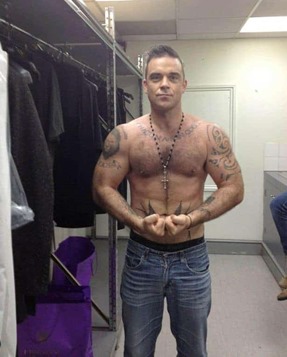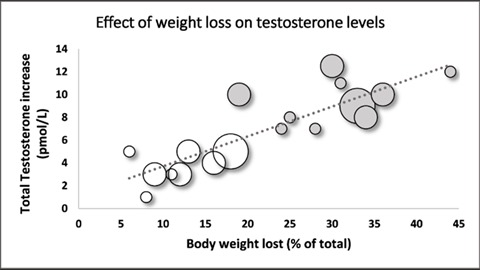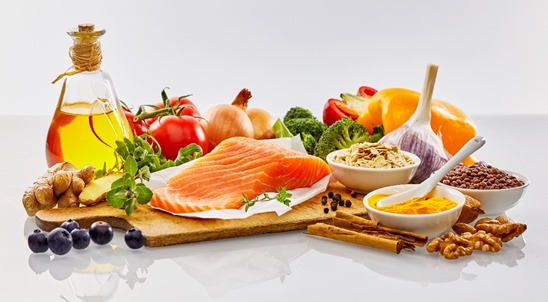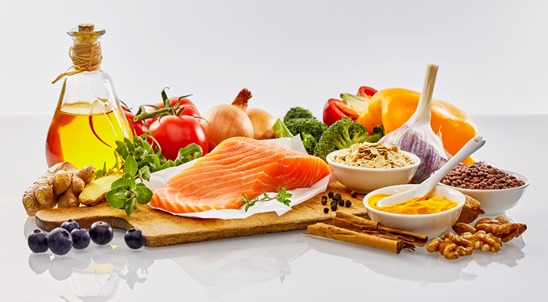Written by Anthony Healy, Certified Personal Trainer, Performance Nutritionist (IOPN) & Author of The Midlife Alpha
Are you a man over 40?
Have you noticed a decline in energy levels, muscle mass, or sex drive? If so, you may be experiencing a drop in testosterone levels.
After the age of 40, testosterone levels decline. That’s a fact.
However, if there is such a thing as the “andropause”, it’s not the equivalent of the female menopause. The male decline is gradual, not vertiginous.
Testosterone in men over 40 decreases between 1-2% every year (1).
Nevertheless, as the primary male sex hormone, it plays a game-changing role in our health, libido, mood, cognitive function, drive, vitality, fat loss and ability to build muscle.
Simply put, a man with low testosterone has no get up and go – in any department.
Fortunately, there are things we can do to level the playing field.
And in this article, we outline the actionable steps you can take to restore testosterone to normal, healthy levels Naturally.
What are normal, healthy testosterone levels?
Declining testosterone levels are a natural, if regrettable, part of the ageing process.
Testosterone production peaks somewhere between adolescence and early adulthood. So, what levels can you reasonably expect to have in midlife?
Testosterone levels are most often measured as nanograms per deciliter of blood (ng/dL) or nanomoles per liter (nmol/L)
And normal, healthy testosterone levels fall somewhere between 300 ng/dL (10 nmol/L) and 1000ng/dL (34.7 nmol/L).
Under 200 ng/dL (6.9 mmol/L) is considered low.
Table 1: Testosterone levels (ng/dL) in healthy men by age:
| Age | Total testosterone | Free testosterone | Bioavailable testosterone |
| 40-49 | 252-916 | 5.3-26.3 | 101-499 |
| 50-59 | 215-878 | 4.2-22.2 | 80-420 |
| 60-69 | 196-859 | 3.7-18.9 | 69-356 |
| 70-79 | 156-819 | 2.2-14.7 | 41-279 |
Source: “Male Testosterone: What is normal?” Barrett-Conor, Clinical Endocrinology 2005;62(3):263–64.
What causes testosterone to decline with age?
Low testosterone (hypogonadism) is where testosterone secretion is insufficient to maintain testosterone levels within a normal range.
There are two types of male hypogonadism:
- Primary hypogonadism (testicular function disorder)
- Secondary hypogonadism (pituitary/hypothalamus dysfunction)
Age-related hypogonadism is due to a combination of both primary hypogonadism (testicular failure) and secondary hypogonadism (hypothalamic-pituitary axis failure).
The number of Leydig cells in the testicles decrease with age, but the hypothalamus and pituitary gland also produce less gonadotropin-releasing hormone (GnRH) and luteinizing hormone (LH).
What are the symptoms of low testosterone?
Low testosterone levels, sometimes referred to as low T, shows up in different ways, including:
- Loss of libido and erectile dysfunction
- Mood swings, irritability and depression
- Decreased energy levels and constant fatigue
- Increased body fat, especially around the abdomen
- Reduced muscle mass and strength
- Loss of bone density, increasing risk of fractures
Should I get tested if I suspect low T-levels?
You can’t monitor what you can’t measure, so in a word, yes.
And if you suspect having low T, getting a test is a straightforward procedure.
A simple blood test, usually taken in the morning when testosterone levels are at their highest, can measure your levels.
That said, it is possible to experience symptoms of low testosterone – such as a diminished sex drive – and yet still have normal T levels.
This is due to the difference between total testosterone levels and free testosterone.
What is the difference between total and free testosterone?
Free testosterone is the biologically active fraction of circulating testosterone, which travels unbound by plasma proteins. It is free to diffuse from blood vessels into the cells and tissues of the body to exert androgen activity.
However, as we age, sex-hormone-binding-globulin (SHBG) levels rise, binding more testosterone and limiting the activity of the free, non-protein bound concentrations.
So, if you do decide to get your T-levels tested, be sure to check for free testosterone as well as total testosterone levels.
What about Testosterone Replacement Therapy?
When Robbie Williams, the famous British pop star, discovered he had the testosterone levels of “an 80-year-old man”, his doctors recommended he start a course of Testosterone Replacement Therapy (TRT).
It had an immediate impact on his confidence, libido and energy levels, providing a “new lease of life.”
His much-improved physique, with fat loss and slabs of new, lean muscle mass also proved very gratifying! 
Robbie Williams, after testosterone replacement therapy
To learn more about the relationship between testosterone and building muscle, download this free chapter, “Dad Bod: Who moved my Testosterone?” from my new book, The Midlife Alpha
On the other side of the pond, Joe Rogan, the celebrated podcaster, is a big fan of TRT and regularly touts its benefits on his show.
By bringing this conversation into the public domain, these celebrities have helped removed some the stigma attached to having low testosterone levels.
And that can only be a good thing.
How does body fat affect Testosterone?
However, given that TRT suppresses natural testosterone production and is not without adverse side effects, addressing lifestyle factors which can cause low T, is preferable as a first port of call.
Excess body fat, particularly visceral fat around the abdomen can convert testosterone into oestrogen (the female sex hormone), the primary female reproductive hormone.
This is not your garden variety of estrogen either, but estradiol, the “uber” female hormone, responsible for the development of female tissue such as breasts, the uterus, and the vagina.
The conversion of testosterone to estrogen is known as “aromatization” (2).
Estradiol is found most active in the fat cells and adipose tissue around the waistline. Alarmingly, abdominal fat acts like a secretory gland, emitting estradiol into the bloodstream.
A bi-directional relationship, therefore, is said to exist between testosterone and obesity.
This is depicted effectively in the graph below (Fig 1), which shows that for every pound of weight loss, testosterone levels increase proportionally (3).
Fig 1: Testosterone and Weight loss: A bi-directional relationship

Adapted from Mathis Grossmann, Alvin M. Matsumoto; A Perspective on Middle-Aged and Older Men with Functional Hypogonadism: Focus on Holistic Management, The Journal of Clinical Endocrinology & Metabolism
Cortisol & Testosterone: Two sides, same coin.
Prolonged periods of stress elevate cortisol levels which can inhibit testosterone production.
Marriage, divorce, troublesome teenagers, sick or aging parents, and health and financial concerns are just some of its potential triggers: the inevitable rites of passage for the middle-aged.
But there is, in fact, an inverse relationship between cortisol and testosterone. When one goes up, the other comes down.
And too much cortisol in the blood leads to inflammation, high blood pressure and weakens the immune system.
Calls to “manage” an external stressor, such as divorce, or war, may not be realistic.
But it might explain why you are also experiencing low libido. Reproduction is hardly a priority while the Sabre tooth tiger lies in wait, ready to ambush
Can a lack of sleep affect T-levels?
Like stress, the relationship between sleep and testosterone is well documented.
In fact, most testosterone production occurs while we sleep, especially during rapid eye (REM) phases. Our deepest sleep occurs during the REM stage, which is also when we dream.
Testosterone itself plays a role in regulating sleep quality. Low testosterone levels can lead to fragmented sleep or difficulty in achieving deep sleep, creating stress (cortisol) and a negative feedback loop.
Cortisol and testosterone beat a different drum to our circadian rhythms.
Testosterone rises through the night, while cortisol rises rapidly on awakening and decreases over the course of the day.
Irregular sleep disrupts this rhythm.
| Circadian Rhythms are the physical, mental, and behavioral changes we experience over a 24-hour cycle. Light and dark have the biggest influence on the sleep/wake cycle and its circadian rhythm. |
And what about getting jacked? Does a lack of sleep have any effect on building muscle? In a word, yes.
Testosterone is a powerful regulator of muscle protein synthesis, and a lack of sleep decreases its production (4).
One study found that after only 8 days of 5.5 hours of sleep, participants showed a 10-15% decline (5). Another found that even one night of poor sleep sees an acute reduction of testosterone levels (6).
To learn more about the relationship between testosterone and building muscle, download this free chapter, “Dad BOD: Who moves my Testosterone?” from my new book, The Midlife Alpha.
Can I boost T-levels with nutrition?
Nutrition plays a vital role in the regulation of our testosterone levels.
A nutrient-rich diet, with the right balanced intake of macro-nutrients (fat, protein and carbohydrates) and micro-nutrients (vitamins and minerals) can make all the difference to healthy testosterone production.
Fats: 30-40% of calories
In the 1970’s, as a result of the famous Seven Countries Study by Ancel Keys (7), dietary fat of all types became indiscriminately demonized. And the reduction of total fat in the diet became the bedrock of Western government dietary recommendations.
But dietary fat is an essential macronutrient, as certain fatty acids (e.g. Omega 3, Omega 6) cannot be synthesized by the body in sufficient quantities.
Dietary fat provides structural building blocks for the whole body and is indispensable for hormone function.
Cholesterol, for example, is the precursor to the synthesis of all steroid hormones, including testosterone.
Recent research published in The Journal of Steroid Biochemistry and Molecular Biology found that low-fat diets may actually decrease men’s testosterone levels, by as much as 10-15% (8).
Similarly, higher fat diets (≥30%) have been shown to see an increase in testosterone levels (9).
In this context, while it still makes sense to keep an eye on total levels of saturated fat, healthy, cardio-protective fats like salmon, and monounsaturated fats like olive oil and avocado, should be staples in a well-balanced diet.

Healthy, cardio-protective fat sources like salmon and olive oil
Carbohydrates: 30-35% (130 g)
Carbohydrates, unlike proteins and fats, are not essential for survival.
They are also become less anabolic (growth-promoting) with age.
Yet, these foods are vital sources of fibre, vitamins, antioxidants, and minerals, critical to growth, metabolism, bone health, immune function, and energy production.
So, while a more moderate, strategic approach to carbs is preferable with age, 30-35% of your calories (or at least 130g) should be set aside for carbohydrates.
Carbs fuel strong performances in the gym, are protein-sparing and anti-catabolic.
Similarly, when carbohydrate intake is too low, the enzyme AMPK, an energy sensor, blunts energy-consuming processes, such as building muscle and heightens the catabolic ones, such as muscle protein breakdown (10).
Strategic carbohdyrate consumption, for example, post workout, promotes insulin secretion, reduces cortisol levels and improves our cortisol-to-testosterone ratios (11).
Protein: 1 g/ Lb of Target weight
The role testosterone plays in the building and maintenance of skeletal muscle mass is irrefutable.
Testosterone interacts directly with the androgen receptors in the myonuclei and satellite cells of muscle, and through the enzyme mTOR, signals muscle growth.
It also exerts direct, anabolic actions on muscle protein synthesis.
Muscle protein synthesis (MPS) is the engine behind the “machinery” of muscle building. MPS is an anabolic process which incorporates new amino acids—the building blocks of dietary protein—into muscle-bound protein.
Testosterone also inhibits muscle protein breakdown and the catabolic, muscle-wasting effects of cortisol (12).
| Anabolic is the set of growth promoting metabolic pathways which construct larger molecules from smaller ones. Testosterone, both natural and synthetic, is an anabolic steroid. |
In a nutritional context, dietary protein is our most effective anabolic stimuli for promoting muscle protein synthesis.
A recent, exhaustive review and meta-analysis of peer-reviewed research (13) suggests that protein consumption for optimal muscle protein synthesis lies between 1.6 g/kg/day – 2.2 g/kg/day (0.7-1 g/lb.)
However, for men over 40 –who must contend with other challenges, such as declining testosterone levels and anabolic resistance–it is advisable to shoot for the upper end of the range and ingest 1 gram of protein per pound of your target weight (2.2 g/kg).
A protein-rich diet will also help lower sex hormone-binding-globulin (SHBG) and free up more of the bio-available, unbound testosterone, which helps build muscle mass and strength (14).
Anabolic Resistance is the blunted response of muscle protein synthesis to the normally anabolic (growth-promoting) stimuli of dietary protein.
To learn more about how to optimize nutrition for healthy testosterone levels, fat loss and building muscle, hit the link below to buy the book “The Midlife Alpha: Re-Engineering Men’s Health Over 40”:
Can you boost your T-levels through training?
Resistance Training:
Lifting weights, especially with compound movements like squats, deadlifts, presses and rows are the most effective way to acutely boost testosterone levels (15).
Training large muscle groups, especially glutes and legs can lead to a greater testosterone response.
Aim to lift heavy weights in the 6-8 rep range, performing at least 3 sets per exercise. Similarly, give yourself adequate rest time (2-3 mins) between sets for optimal testosterone release.
Cardiovascular Exercise:
The most effective form of cardiovascular exercise to acutely raise testosterone levels is High Intensity exercise (16).
High intensity exercise, such as sprints, is characterized by short bursts of intense exercise followed by brief recovery periods and can lead to greater increases in testosterone compared to continuous, steady-state cardio.
To learn more about how to optimize training for healthy testosterone levels, fat loss and building muscle, hit the link to buy my book “The Midlife Alpha: Re-Engineering Men’s Health Over 40” and lock in our best price guarantee.
Ten Ways to Boost Testosterone Naturally
- Get lean!
- Engage in a resistance training program – acutely elevates testosterone levels.
- Perform HIIT cardio, which elevates free testosterone levels.
- Eat a protein-rich diet. This will help lower sex hormone-binding-globulin (SHBG) and free up more bioavailable, unbound testosterone.
- Eat cruciferous vegetables such as broccoli, cauliflower and kale. They can help metabolize surplus estrogen and lower SHBG levels.
- Avoid low-fat diets – the sure-fire way to tank your testosterone levels.
- Consume carbohydrates around the workout period to inhibit cortisol.
- Limit alcohol intake.
- Get 7-8 hours of quality sleep every night.
- Consider supplementation with Vitamin D, Zinc, Magnesium, Boron, Tongkat Ali, and Coleus Forskohlii.
References
1. Harman SM, Metter EJ, Tobin JD, et al; Longitudinal effects of aging on serum total and free testosterone levels in healthy men. Baltimore Longitudinal Study of Aging. J Clin Endocrinol Metab. 2001; 86:724–31.
2. Santen, R.J., Is aromatization of testosterone to estradiol required for inhibition of luteinizing hormone secretion in men? J Clin Invest. 1975 Dec; 56(6): 1555–1563.
3. Mathis Grossmann, Alvin M. Matsumoto. A Perspective on Middle-Aged and Older Men with Functional Hypogonadism: Focus on Holistic Management, The Journal of Clinical Endocrinology & Metabolism, Volume 102, Issue 3, 1 March 2017, Pages 1067–1075
4. Urban, R. J., Bodenburg, Y. H., Gilkison, C., Foxworth, J., Coggan, A. R., Wolfe, R. R., & Ferrando, A. (1995). Testosterone administration to elderly men increases skeletal muscle strength and protein synthesis. American Journal of Physiology, 269, E820–826.
5. Wittert G. The relationship between sleep disorders and testosterone in men. Asian J Androl. 2014;16(2):262-265.
6. Cote KA, et al. Sleep deprivation lowers reactive aggression and testosterone in men. Biol Psychol. (2013)
7. Keys, A. (1970) coronary heart disease in seven countries. American Heart Association, New York, NY. Nutrition. 1997 Mar;13(3):250-2.
8. Whittaker J, Wu K. Low-fat diets and testosterone in men: Systematic review and meta-analysis of intervention studies. J Steroid Biochem Mol Biol. 2021 Jun; 210:105878
9. Zamir A, Ben-Zeev T, Hoffman JR. Manipulation of Dietary Intake on Changes in Circulating Testosterone Concentrations. Nutrients. 2021;13(10):3375. Published 2021 Sep 25.
10. Janzen, N.R, Whitfield, J, Hoffman N, J. Interactive Roles for AMPK and Glycogen from Cellular Energy Sensing to Exercise Metabolism. International journal of molecular sciences. 2018
11. Lane AR, Duke JW, Hackney AC. Influence of dietary carbohydrate intake on the free testosterone: cortisol ratio responses to short-term intensive exercise training. Eur J Appl Physiol. 2010 Apr;108(6):1125-31
12. Vingren JL, Kraemer WJ, Ratamess NA, Anderson JM, Volek JS, Maresh CM. Testosterone physiology in resistance exercise and training: the up-stream regulatory elements. Sports Med. 2010 Dec 1;40(12):1037-53.
13. Morton RW, Murphy KT, McKellar SR, et al. A systematic review, meta-analysis and meta-regression of the effect of protein supplementation on resistance training-induced gains in muscle mass and strength in healthy adults. British Journal of Sports Medicine 2018; 52:376-384.
14. Longcope C, Feldman HA, McKinlay JB, Araujo AB. Diet and sex hormone-binding globulin. J Clin Endocrinol Metab. 2000 Jan;85(1):293-6.
15. D’Andrea S, Spaggiari G, Barbonetti A, Santi D. Endogenous transient doping: physical exercise acutely increases testosterone levels-results from a meta-analysis. J Endocrinol Invest. 2020 Oct;43(10):1349-1371
16. Herbert P, Hayes LD, Sculthorpe NF, Grace FM. HIIT produces increases in muscle power and free testosterone in male masters’ athletes. Endocr Connect. 2017 Oct;6(7):430-436
